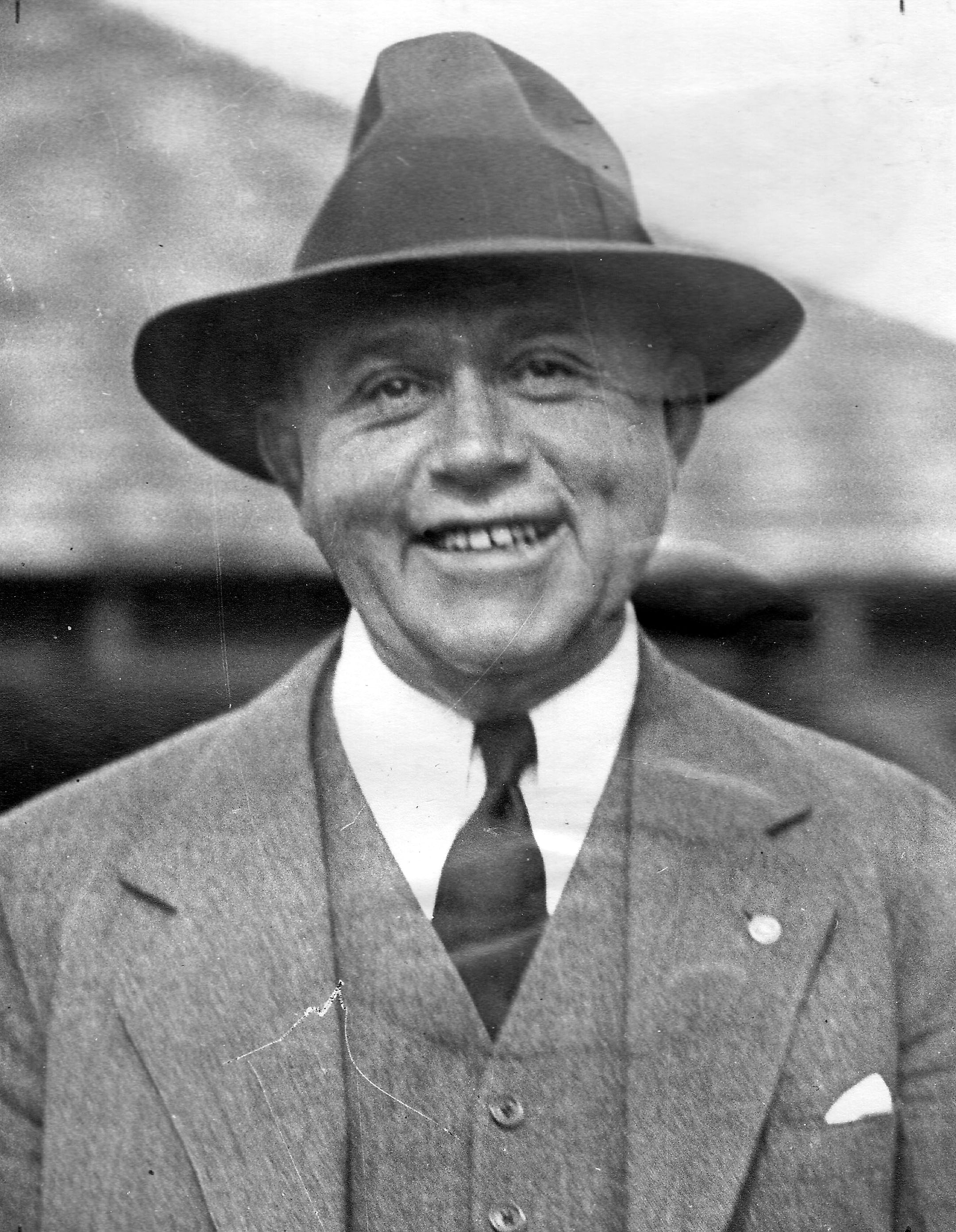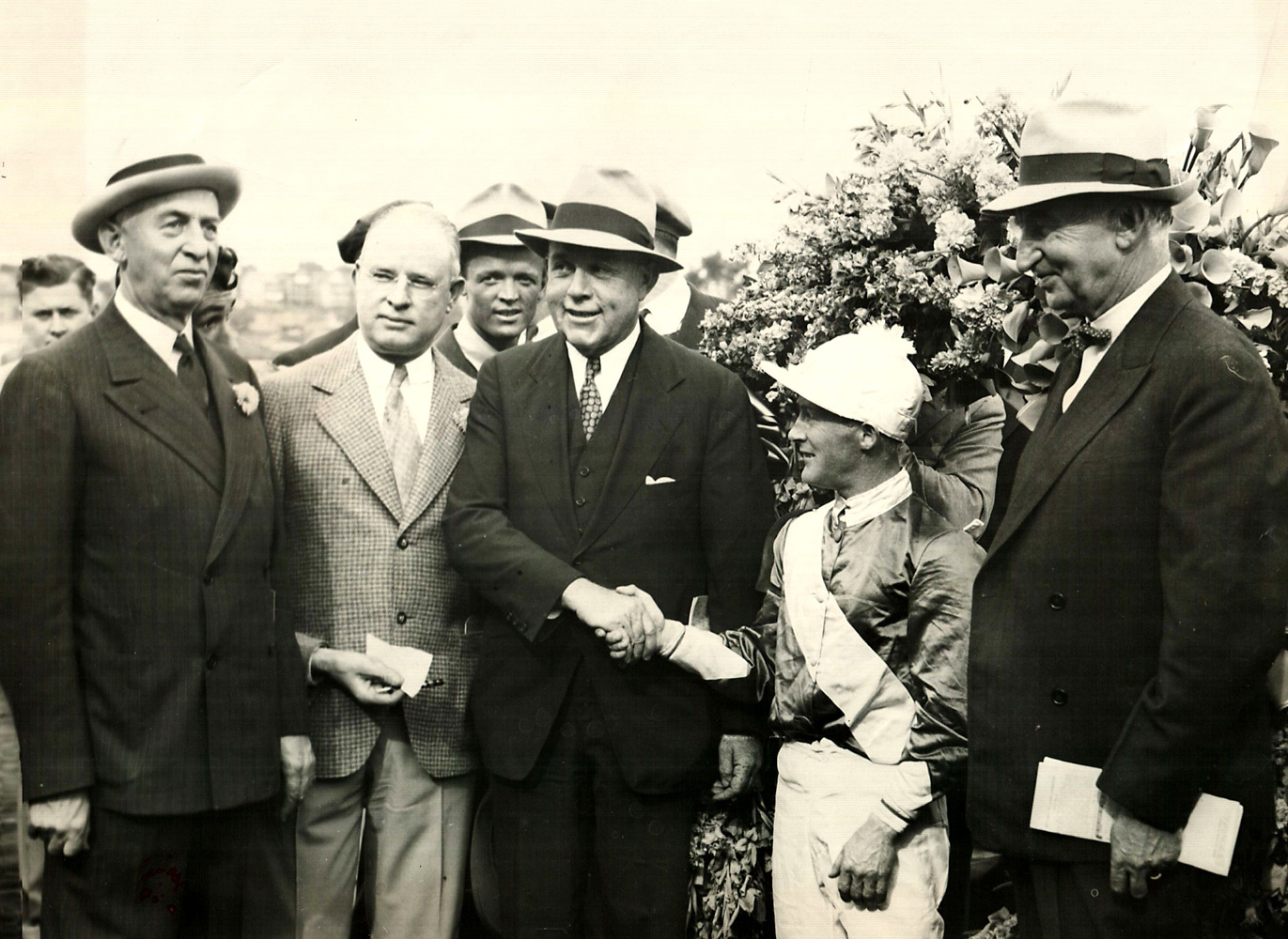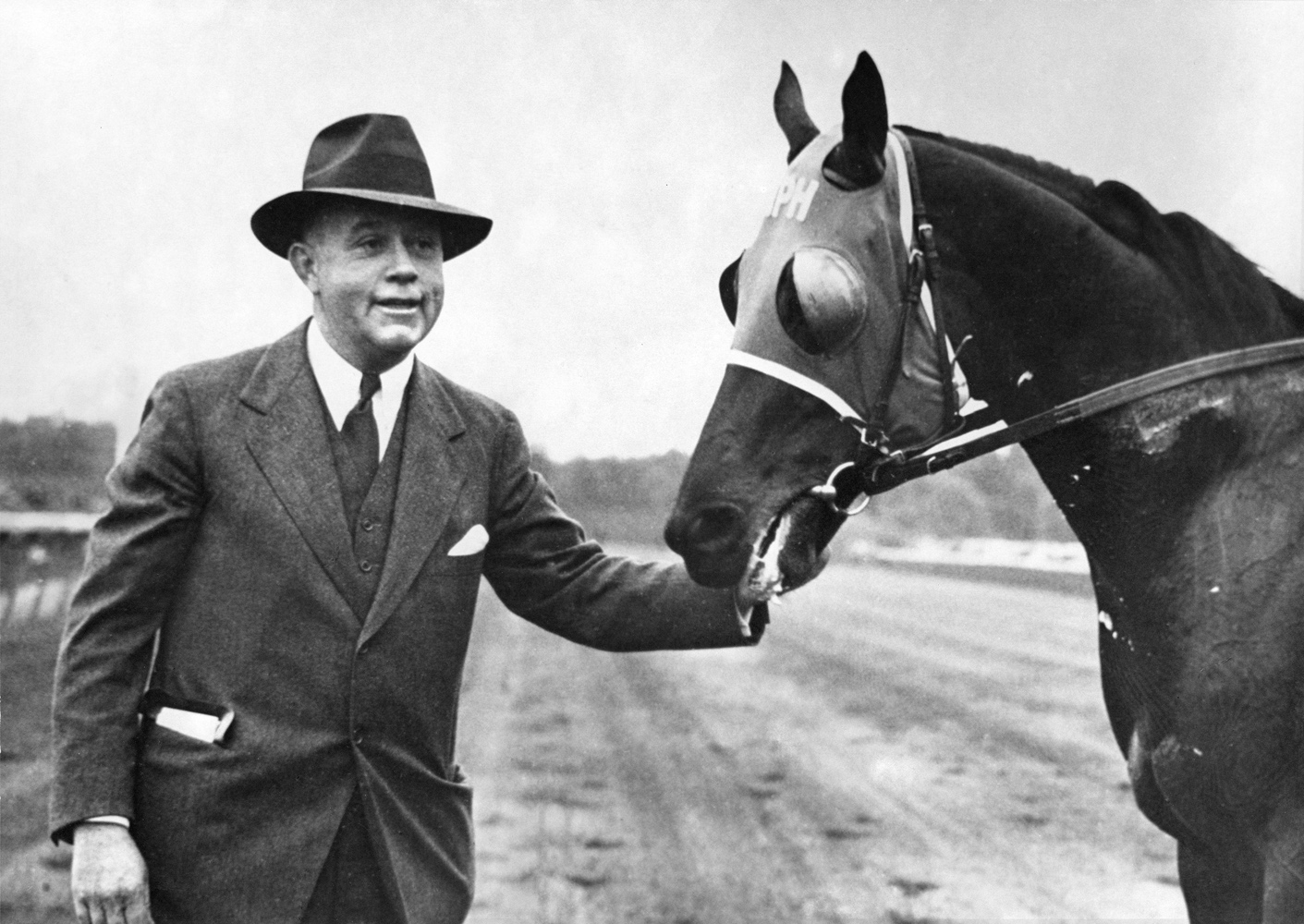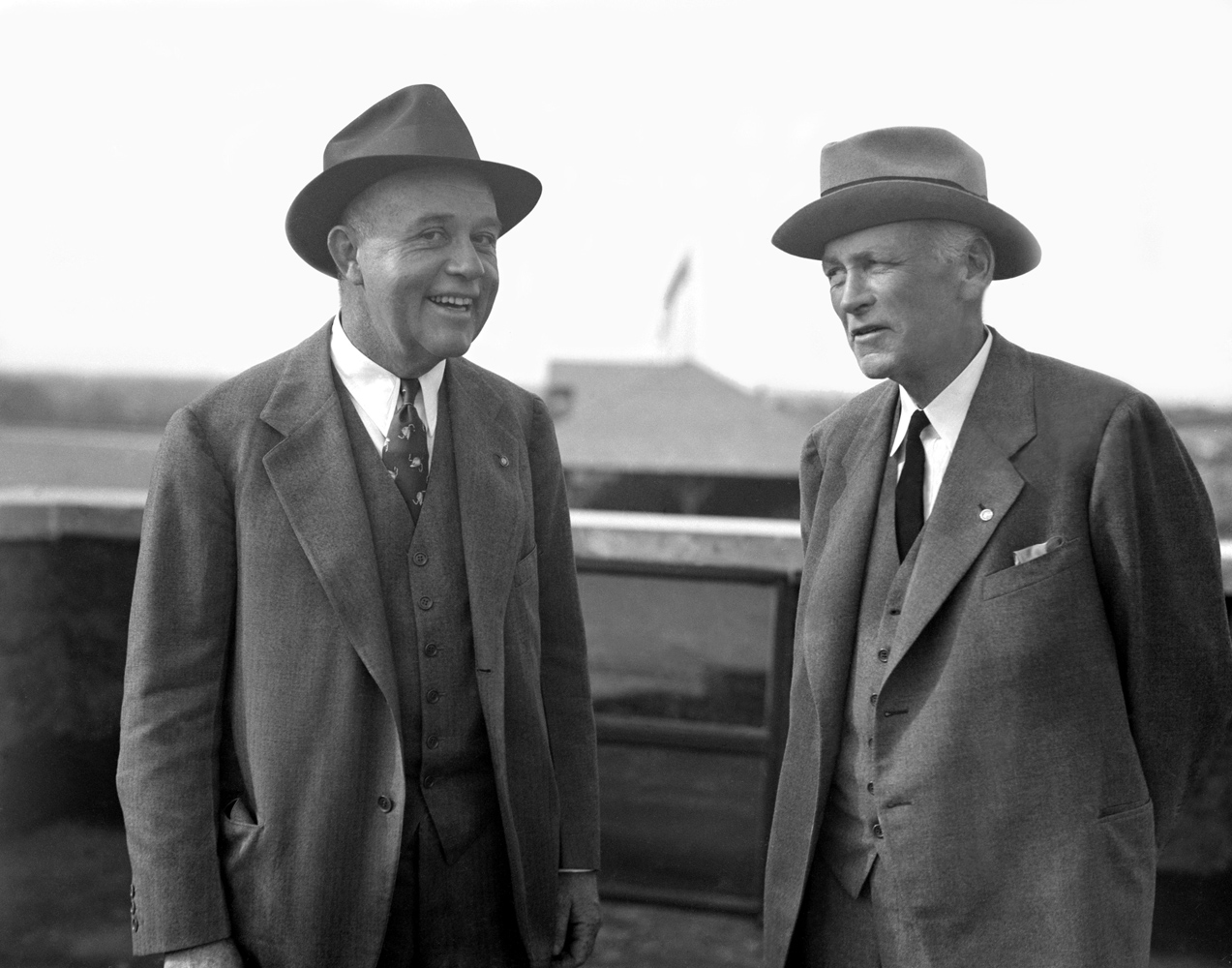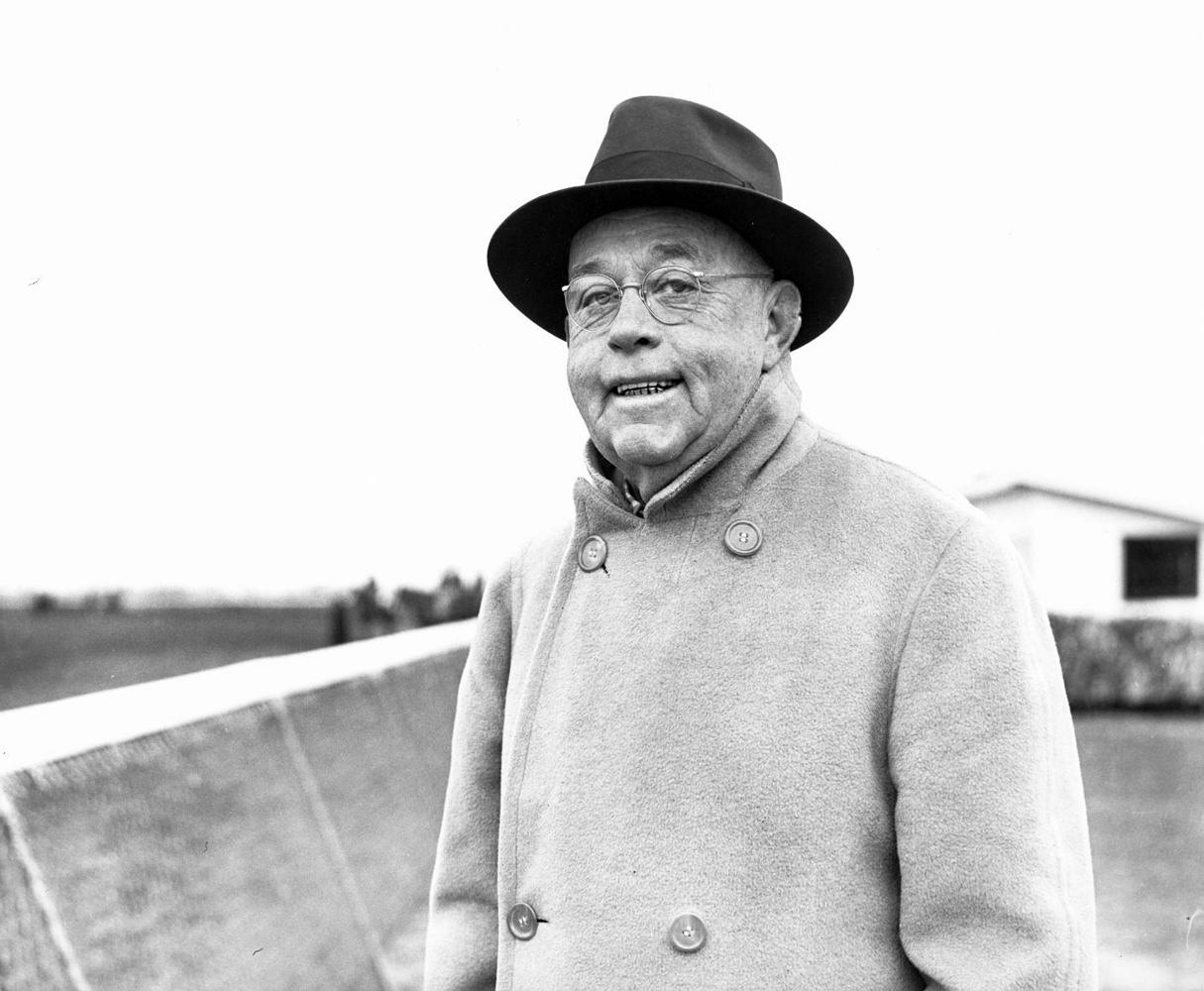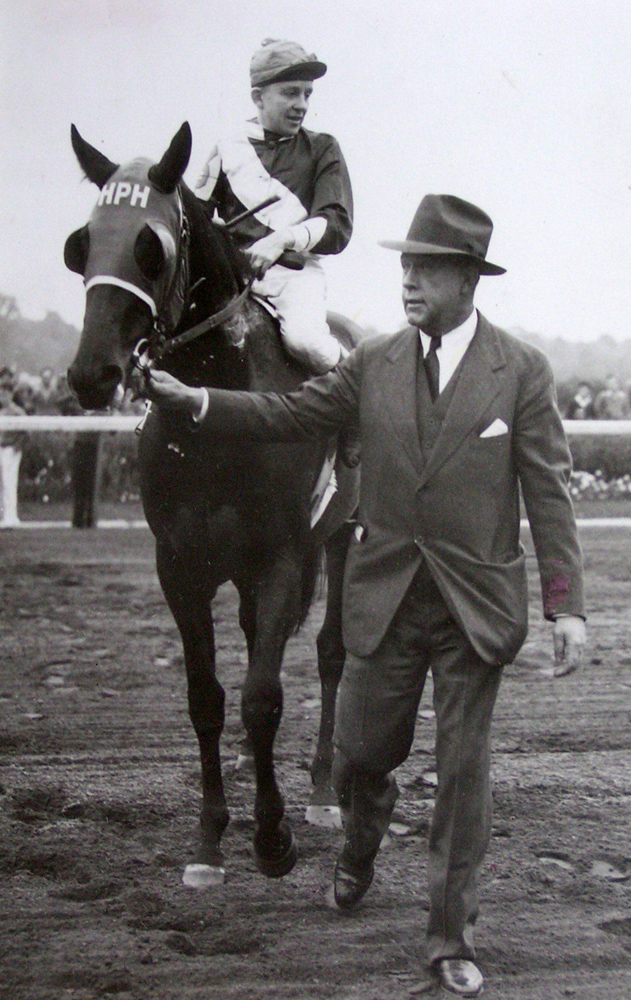Hal Price Headley
Two of the thoroughbred racing giants inducted into the Hall of Fame in 2018 as Pillars of the Turf inductees elicited similar memorial superlatives from the media. Of Arthur B. Hancock, Sr., the Bloodstock Breeders’ Review of 1957 opined he was “probably the most influential breeder in the history of the American Turf.” After Hal Price Headley’s death five years later, The BloodHorse magazine countered with “in all-around mastery of the various aspects of thoroughbred racing and breeding, Headley had no equal among his contemporaries.”

2018
Dec. 19, 1888, Lexington, Kentucky
March 12, 1962, Lexington, Kentucky
Biography
Two of the thoroughbred racing giants inducted into the Hall of Fame in 2018 as Pillars of the Turf inductees elicited similar memorial superlatives from the media. Of Arthur B. Hancock, Sr., the Bloodstock Breeders’ Review of 1957 opined he was “probably the most influential breeder in the history of the American Turf.” After Hal Price Headley’s death five years later, The BloodHorse magazine countered with “in all-around mastery of the various aspects of thoroughbred racing and breeding, Headley had no equal among his contemporaries.”
Any who might find in these tributes a challenge to choose sides would find their emotions better served by concentrating gratitude that Messrs. Hancock and Headley have few peers in the matter of instilling service to the turf among succeeding generations.
Born in Lexington, Kentucky, on Dec. 19, 1888, Headley was precocious in taking the baton from his own father, Hal Petit Headley. Sent at age 14 to oversee a draft of horses traveling from Kentucky to the World’s Fair in St. Louis, Headley was said to have returned with a box of ribbons and $4,600 in prize money. Headley dropped out of Princeton when his father suffered a stroke. The young man thus was cast in a role of running La Belle Farm and Beaumont Farm in Lexington.
Headley was still a young man when he became a founder of an organization which was a forerunner of the Thoroughbred Owners and Breeders Association. Like Hancock, Headley was one of the Kentuckians who promoted a connection of Bluegrass horsemen with the Saratoga yearling sale. When Breeders’ Sales Co. was launched in Kentucky during World War II, Headley was also involved. That Breeders’ Sales Co. later was folded into the Keeneland Association would make Headley’s connection seem almost pre-ordained, for his signature contribution to the turf has generally been regarded as his fundamental role in the creation of Keeneland Race Course. During the middle 1930s, Headley spearheaded a largely local effort to replace the Kentucky Association track, which had closed a few years earlier after operating for more than a century.
Headley’s vision and acumen helped make Keeneland not just a racetrack, but a beacon for all that is elegant and sporting in the world of thoroughbred racing. It later added a sales arm which became established as a leader in the world of thoroughbred auctions. Headley served as Keeneland’s first president in 1936, a role he maintained until 1951. To aid the track in its early years, Headley provided workers and mules from his own farm to help operations. He was also the first president of the Thoroughbred Horse Association, a forerunner of the Thoroughbred Owners and Breeders Association. Headley was the Thoroughbred Club of America’s Honored Guest in 1941.
In his own multi-faceted breeding, racing and sales career, a key example of his horse deal savvy was Headley’s purchase of the stallion prospect Pharamond II from England’s Lord Derby. Headley’s Pharamond II homebreds were led by 1937 2-year-old champion Menow, who joined the likes champion Alcibiades among the Headley family treasures.
Menow won the Champagne (1937), Futurity (1937), Withers (1938), Massachusetts Handicap (1938), and Potomac Handicap (1938) for Headley, while Alcibiades won the Kentucky Oaks and Arlington Oaks in 1930. Headley won the Kentucky Oaks a second time in 1938 with Flying Lee. Headley’s other champions were Apogee (1936 champion 2-year-old filly) and Askmenow (1942 champion 2-year-old filly). He bred a total of 88 stakes winners.
Headley’s son, Price Headley, bred the stakes winner Hunza Dancer, who placed in the Epsom Derby, while daughter Alma married Louis Lee Haggin II, who followed his father-in-law as protector of the Keeneland traditions in many years as hands-on leader of the organization. Louis Lee Haggin III later served as chairman of Keeneland’s select team of trustees.
Another daughter, Alice, later took over leadership at Mill Ridge Farm with her husband, Dr. John Chandler. The international reputation of Mill Ridge was abetted by Mrs. Chandler breeding Sir Ivor, a Keeneland auction yearling which won the historic Epsom Derby in 1968 for his buyer, Raymond Guest. Sir Ivor launched a quick sequence of American-bred success abroad, which had its role in the acceptance of Keeneland as a source of international winners of the highest order. Alice’s sons, Headley, Mike, and Reynolds, became instrumental in the continued success of Mill Ridge and have branched out into other racing ventures.
Achievements
Bred 88 stakes winners, including four champions
Won the Kentucky Oaks — 1930, 1938
President of Keeneland Race Course — 1936 to 1951
Thoroughbred Club of America's Honored Guest — 1941
Media
